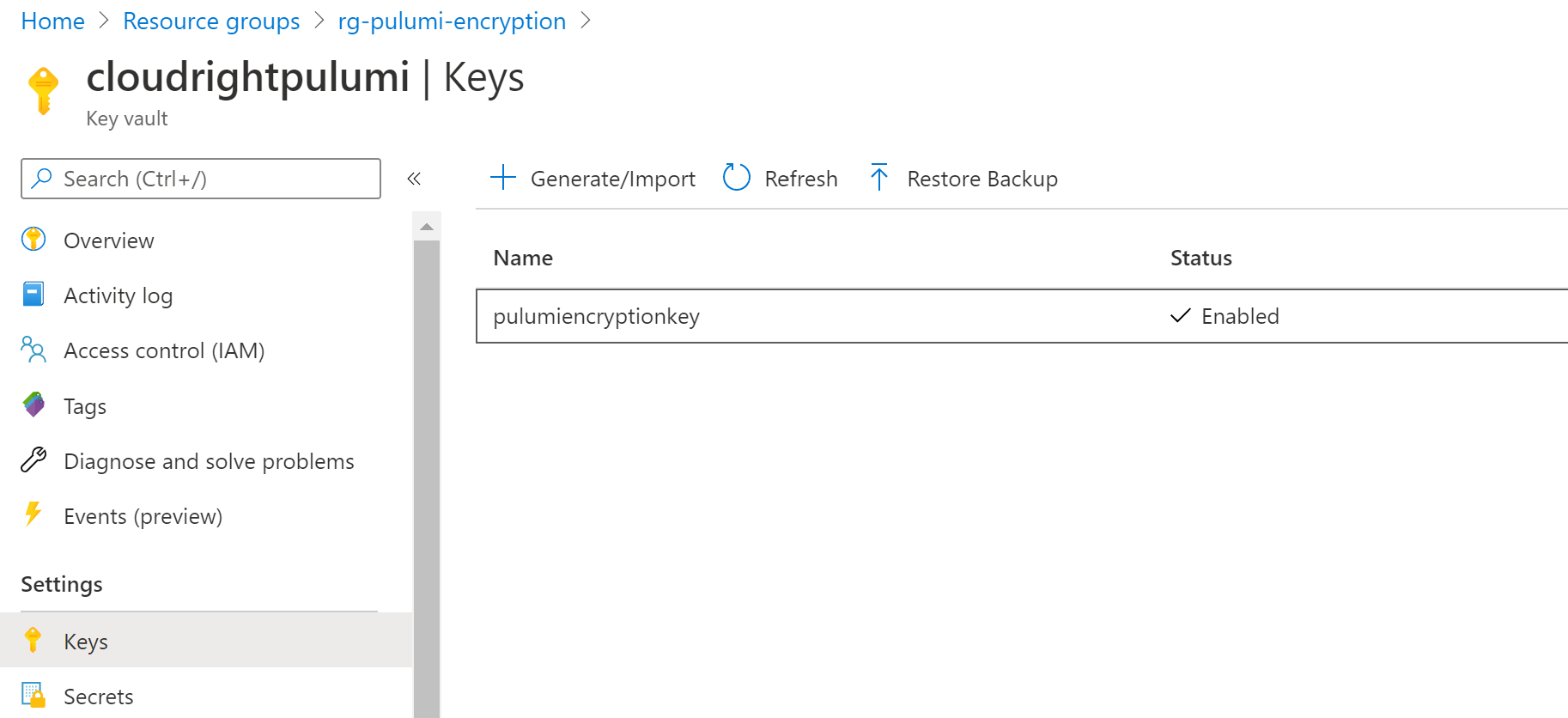Managing Deployment Secrets with Azure Key Vault
Secrets (API keys, passwords, server names, access keys, user names, etc) are always part of any infrastructure / application deployment and always you get to a point where someone will ask “How do we manage these secrets?”.
Every company’s security approach is different. Some companies are absolutely fine with having a company like Microsoft manage encryption keys for them (managed keys), others require everything to be encrypted with a customer managed key (CMK) where they bring their own key and import it to the platform or create a new key on the platform.
When deploying infrastructure with Pulumi similar situations come up and companies need to decide what approach to take.
Secret Encryption with Pulumi
Pulumi supports the following methods when it comes to encrypting secrets:
- using the Pulumi service, essentially a PaaS where everything is managed end to end (state and secrets)
- using the Pulumi service but using your own encryption passphrase
- using your own self-managed state storage (like Azure Storage Blob) which by default uses a passphrase to encrypt secrets or
- bring your own key using Azure Key Vault encryption keys
In this article we will cover the last scenario and show how to set this up in just a few steps.
Creating the Azure Key Vault Key
Prerequisites:
azcli (I use the docker image provided by Microsoft)docker run -it mcr.microsoft.com/azure-cli
- access to an Azure subscription (I will deploy resources that cost money, make sure you understand this, no matter how little the cost actually is)
- pulumi cli
Make sure you are authenticated to Azure first.
- create an Azure Resource Group (make sure you replace the name and location with values that work for you)
az group create --name rg-pulumi-encryption --location australiasoutheast - create an Azure Key Vault (make sure you replace the key vault name and other values with values that work for you)
az keyvault create --name cloudrightpulumi --resource-group rg-pulumi-encryption --location australiasoutheast - Create the Azure Key Vault Key (make sure you replace these values with ones that work for you)
az keyvault key create --name pulumiencryptionkey --vault-name cloudrightpulumi - Retrieve your own users’ object ID and assign a Key Vault Access Policy to yourself.
azCLI will already create an access policy by default, however this policy does not grant all required permissions.
USER_OBJECT_ID=`az ad user show --id [email protected] | jq -r .objectId`
az keyvault set-policy --name cloudrightpulumi --object-id $USER_OBJECT_ID --key-permissions encrypt decrypt get create delete list update import backup restore recover
Congratulations. We have now created an Azure Key Vault with an Encryption Key.
Configure Pulumi to use Azure Key Vault
We need to tell Pulumi that it needs to allow us to use a custom secrets provider. We do that by setting an environment variable. AZURE_KEYVAULT_AUTH_VIA_CLI needs to have a value of true. If you are using the above mentioned docker image then you can set this variable in Linux by running the following code snippet:
export AZURE_KEYVAULT_AUTH_VIA_CLI=true
Before executing the next step, make sure you are either logged in to your Pulumi self-hosted backend or your Pulumi Organisation.
This step now creates a new pulumi project (stack new) and configures it to use the azurekeyvault provider. Replace cloudrightpulumi with the Key Vault Name that you created above, similar with pulumiencryptionkey.
pulumi stack new --secrets-provider="azurekeyvault://cloudrightpulumi.vault.azure.net/keys/pulumiencryptionkey"
We accept all the defaults here to make it easy and voila, our project has been created. 
We can verify that Pulumi has actually used our Key Vault Encryption Key by looking at the Pulumi.dev.yaml (replace dev with whatever stack name you chose).
From now on all Pulumi stack configuration will be encrypted using the Azure Key Vault Encryption key.
Cleanup
Don’t forget to delete the Azure Resource Group after you’re done testing.


